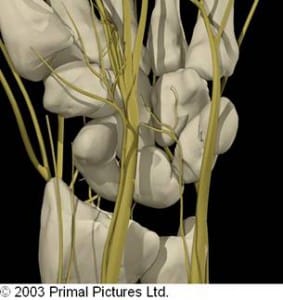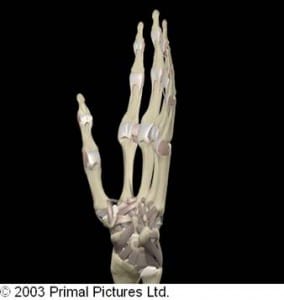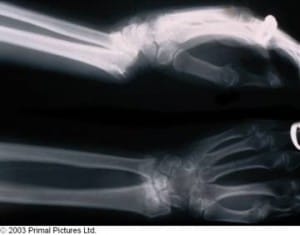WRIST FRACTURES (SCAPHOID FRACTURE, DISTAL RADIUS FRACTURE, ETC.)
The wrist is the flexible link between the forearm and fingers. It is a complex joint composed of two rows of carpal bones which articulate with the lower end of the ulnar and radius of the forearm.

Tendons travel down from the elbow and forearm and cross over the wrist to insert onto the fingers, hand and thumb. They do not insert on the bones of the wrist and thus stability of the wrist is largely down to the intricate ligamentous support.

The wrist joint is therefore very vulnerable to injury. In the case of falling onto an outstretched hand, the wrist is forced into positions which can stress the small bones of the wrist and end of the forearm, leading to a fracture or dislocation. These severe types of bony injury are characterised by persistent pain and tenderness, swelling, probable bruising and deformity. An example of a common fracture located at the end of the radius is termed a Colle’s fracture.
This type of injury usually occurs between 2 and 3 cm from the wrist joint at the point where the radius starts to narrow to form the broad and relatively soft bone forming the joint to the hard (cortical) bone in the shaft of the radius. Often as a result of injury, the patient exhibits a “dinner fork deformity”.
Colle’s Fracture

It is necessary to note that, in the early stages following injury, certain fractures within the wrist may not show up on x-ray. These are termed “occult fractures” and an example of this is a scaphoid fracture, whereby it has been approximated that 10-15% of scaphoid fractures are not identified on routine x-ray.
This type of fracture is often characterised by pain in the “anatomical snuff box” in the junction between the wrist and base of the first metacarpal. In the absence of positive findings for a fracture on an x-ray, repetitive x-rays or additional imaging may be taken a few days post injury. This is because fracture of the scaphoid can affect the blood supply to the bone and this in itself may cause possible complications in the future.
(The list of conditions given above and subsequent explanations are intended as a general guide and should not be considered a replacement for a full medical examination. Furthermore, we do not purport to treat all the conditions listed. Should you wish to discuss any of these conditions with our chiropractors, please do not hesitate to phone the clinic on 020 7374 2272 or email enquiries@body-motion.co.uk).
Our team of chiropractors and massage therapists are on hand to answer any questions you may have, so get in touch today via enquiries@body-motion.co.uk or on +44 (0)20 7374 2272.
